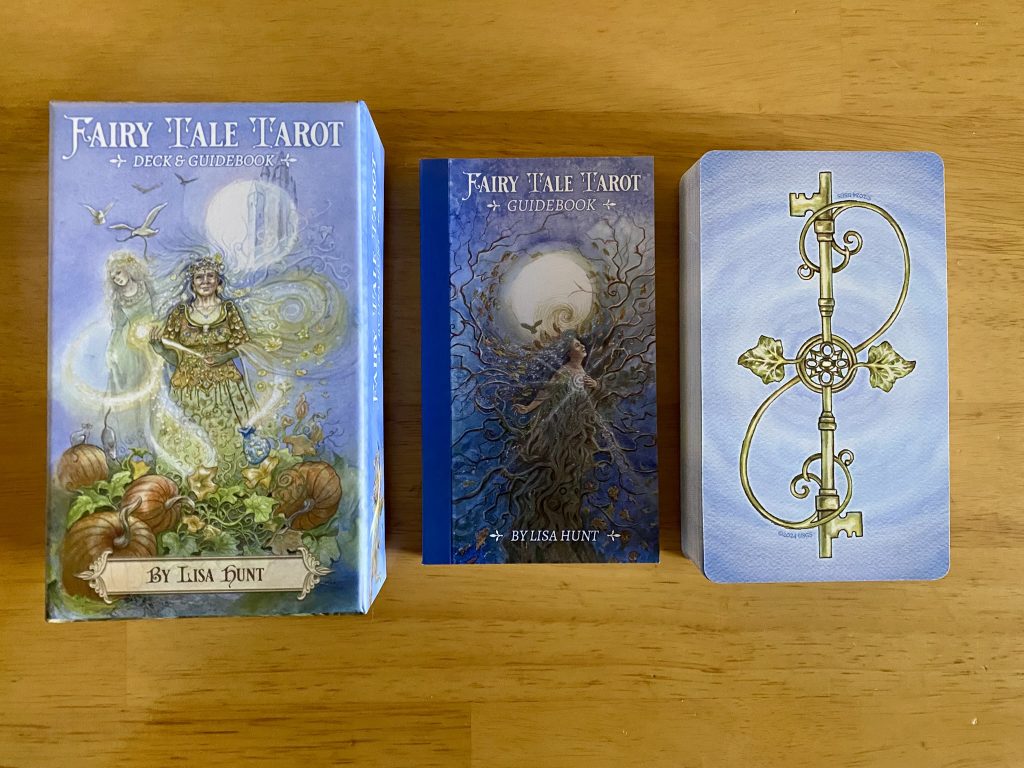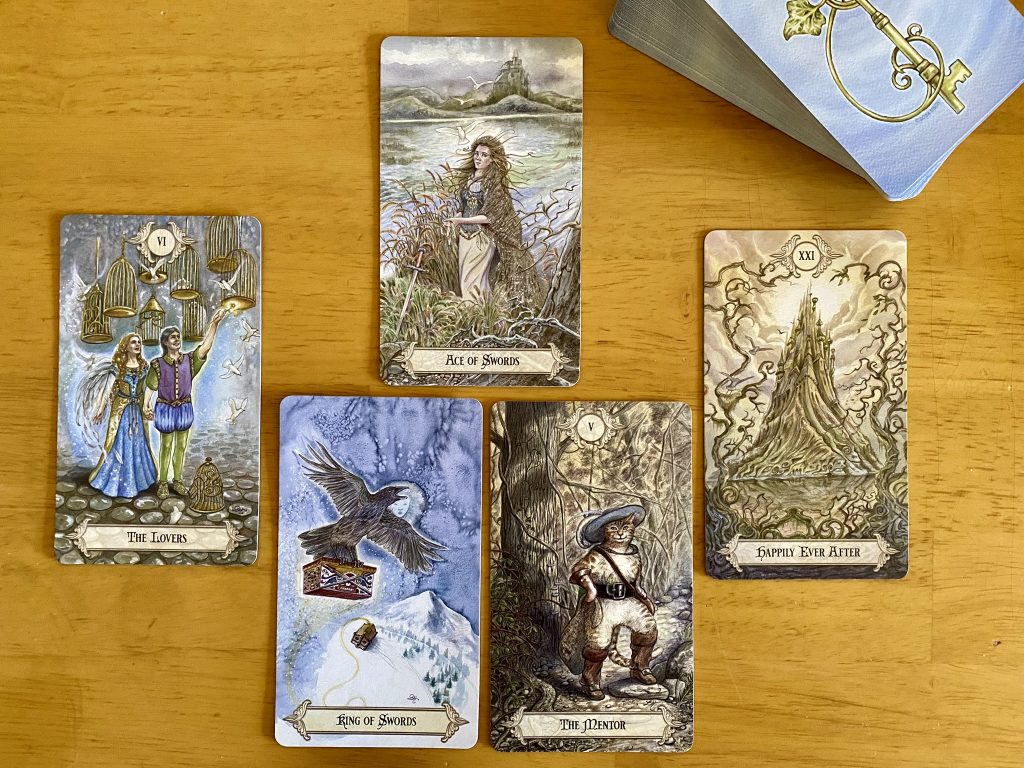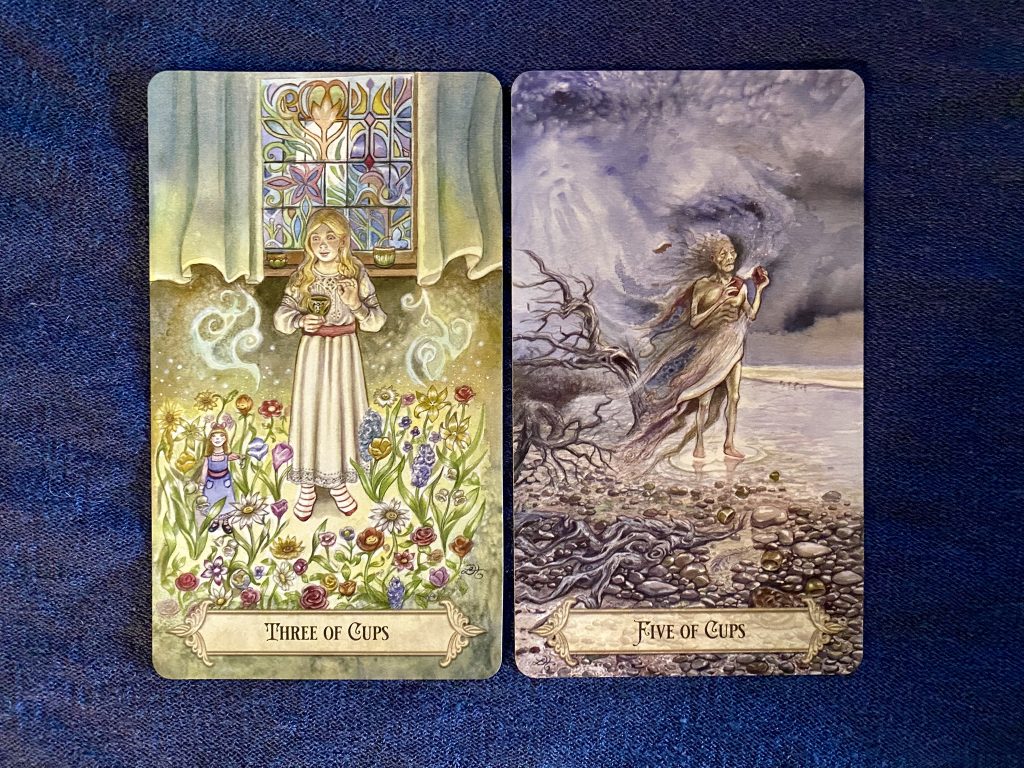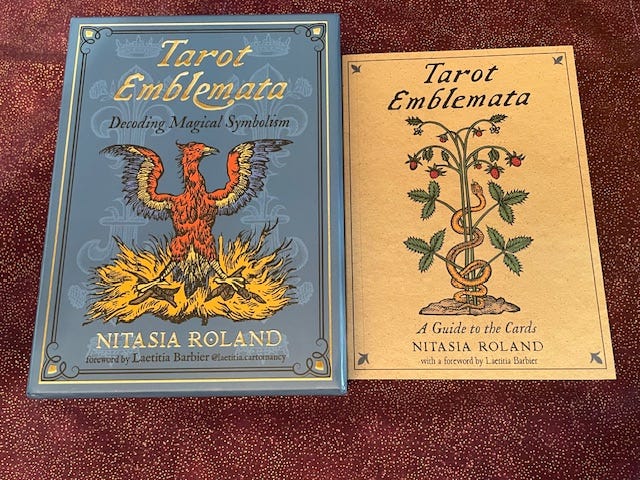- Fairy Tale Tarot
- Created and illustrated by Lisa Hunt (www.lisahuntart.com)
- Publisher: U.S. Games, Inc. (www.usgamesinc.com)
- Recommended retail price: $23.95
- ISBN: 978-1-64671-213-7
- Review: Cadence (Instagram: @temperanceandtruth)
The news of a re-release of Lisa Hunt’s highly-sought after Fairy Tale Tarot was met with much excitement in the tarot community. The deck was first published in 2009 by Llewellyn Publications; it went out of print and was only to be found on resale sites for extraordinary amounts of money. The deck was re-released in December 2024 by US Games, and I’m happy to report that it lives up to all expectations.
Those familiar with Lisa Hunt’s other work, such as the Pastoral Tarot, Ghosts & Spirits Tarot, Winged Enchantment Oracle, and Fantastical Creatures Tarot (among others) will immediately recognize her signature art style. The incredibly intricate detailing in Lisa’s art is astounding, especially to us non-artists. Lisa shares her process on her Instagram page (@lisahuntart). The illustrations begin with pencil sketches and are finished in watercolor. This is analog work at its finest, something that is increasingly rare in our digital age.
The guidebook is small, yet mighty. Each card description, Major and Minor, has a story and its cultural origin. There have been some name changes in the Major Arcana, including: Fairy Godmother for the Empress; the Mentor for the Hierophant; Entrapment for the Hanged Man; Temptation for the Devil; and Redemption for Judgement, among others. The name changes are all fairly obvious for the seasoned reader, and the changes align well with the theme. The one name change that didn’t work for me was Happily Ever After for The World. I understand the reasoning—Happily Ever After as the familiar ending of fairy tales and The World being the conclusion card of the Fool’s Journey—but I don’t think it is representative of the meaning of the World card. On the other hand, the keywords for the Happily Ever After card are fantastic: self-awareness, wholeness, individuation/integration.
The other change that might prove a bit challenging at first: the Courts. The King and Queen titles and traditional meanings are retained. The Page (RWS)/Princess (Thoth) and the Knight (RWS)/Prince (Thoth) may be a bit confusing. Though not expressly stated, in this deck it appears that the Princesses are equivalent to the traditional Knight (RWS)/Prince (Thoth), and the Princes correspond to the traditional Page (RWS)/Princess (Thoth). Confusing, right? Let me know if you agree!
Sharing both familiar and more obscure fairy tales, the author, “wanted to share tales from around the world, to demonstrate the universal power of [the] stories and how they are an integral part of our world heritage”. She notes that, “the basic themes found in fairy tales—rags to riches, transforming beasts, animal helpers, and other manifestations of the fantastic—resonate with humanity on a collective level.” Further, she says that, “one mission of the fairy tale is to force us to confront [the] dark entities residing in our psyche.” These points are important: if you are perhaps reluctant to pick up this deck thinking that it would fall too young or too light, that would be an incorrect assumption. There is a great deal of depth (and some darkness) within these cards and tales.
Let’s look at the Four of Swords, for example. This depicts a story unfamiliar to me: The White Doe (French cultural origin). The image is a girl partially transitioned into a deer, lying in bed, the four swords around her, and a window and a hanging key in the background. There is discoloration on the sheets, meant to indicate blood seeping through from her feet. Each aspect of the image and its relation to the card meaning is explained in the guide: the deer reflects her “wild but gentle spirit”; the window represents her subconscious wish for freedom; the laying swords represent temporary stability; the blood represents her need to recover following a trying experience in the world; and the key represents her state of transition. There is much more detail depicted in the card and explained in the guidebook. Summarized, the meaning provided is that to solve mental blocks, problems, or the “monkey mind”, it is sometimes necessary to slow down and allow your mind and body to retreat, recover, and regenerate before heading out again.
The Seven of Wands features the very familiar tale of Hansel and Gretel (German cultural origin), showing Gretel shoving the witch into the oven while Hansel watches from his place of imprisonment. Every tiny detail of the card is discussed in the guide, concluding with the meaning that courage and quick, resourceful thinking are needed to face your shadows. It is a neat take on the Seven of Wands and fits with the traditional meanings of defending your beliefs, feeling backed into a corner, standing on your own two feet, and resistance.
The deck comes in a sturdy two-part box. The cardstock is smooth, flexible, and snappy with a satin finish. It shuffles like a dream. I would characterize the deck structure as Rider-Waite-Smith leaning, but it is no clone. The deck provides new ways of looking at cards for the seasoned reader, and while it may not be the obvious choice for a beginner, the well-written guidebook has substantial enough detail for the beginner to get along just fine.













0 Comments